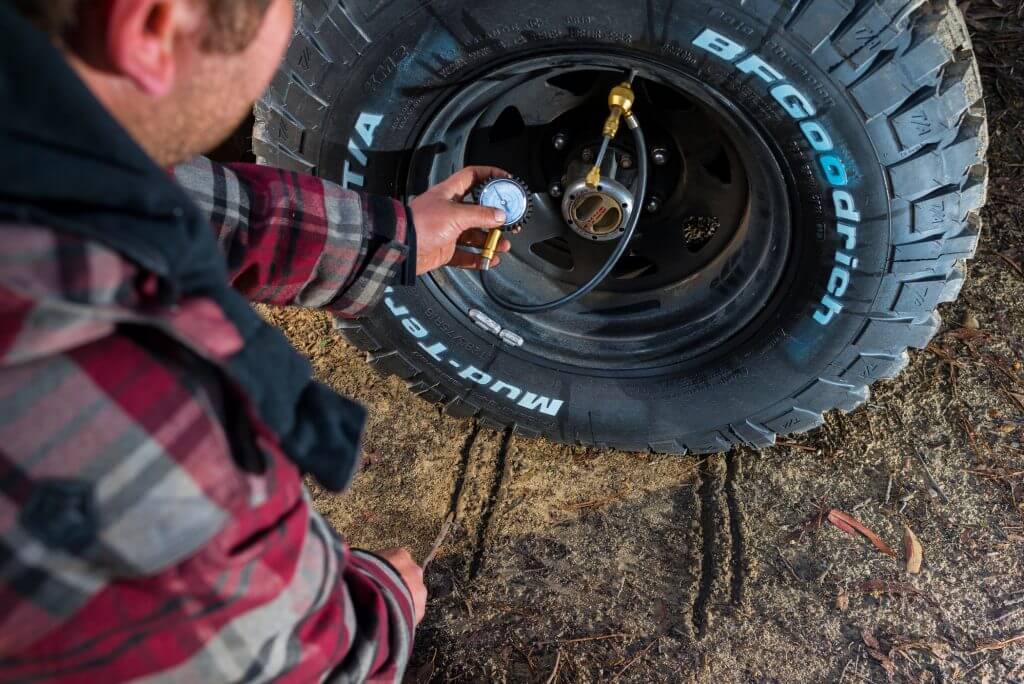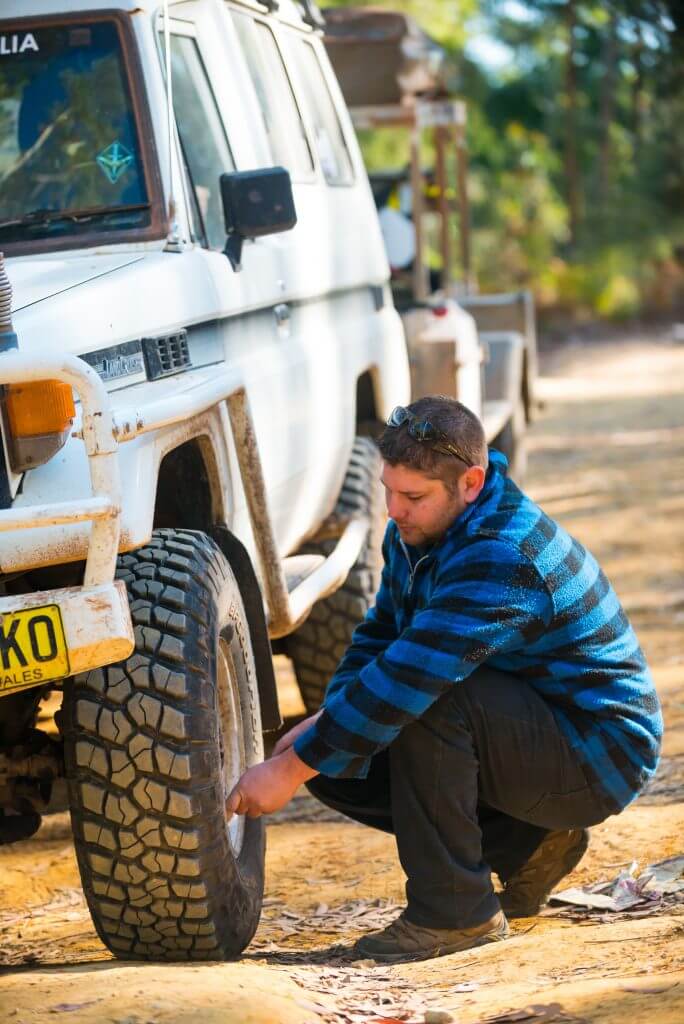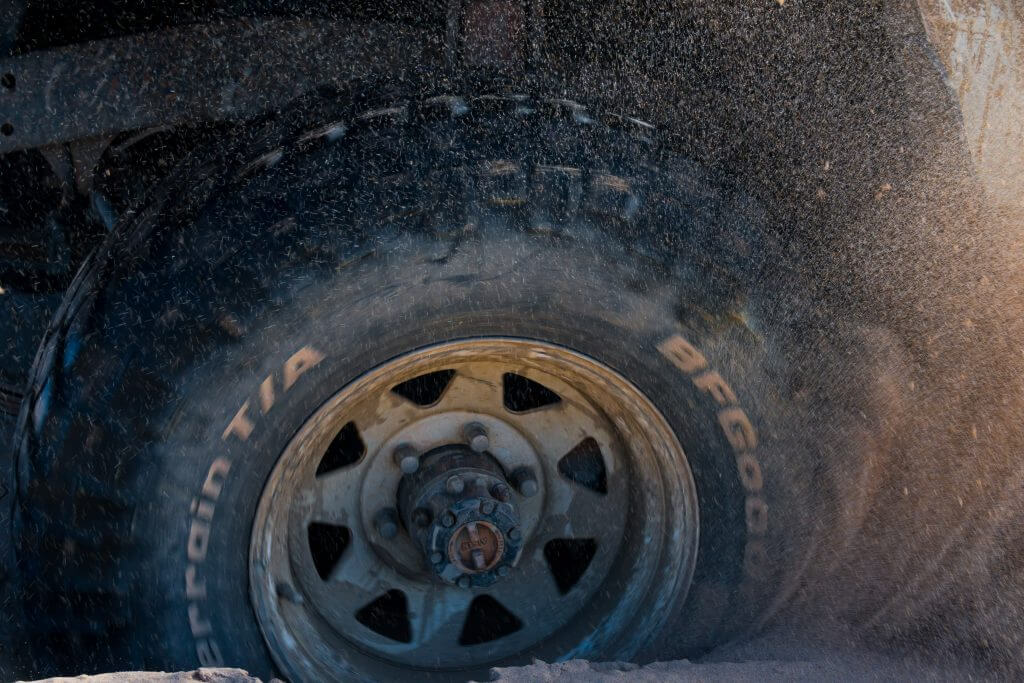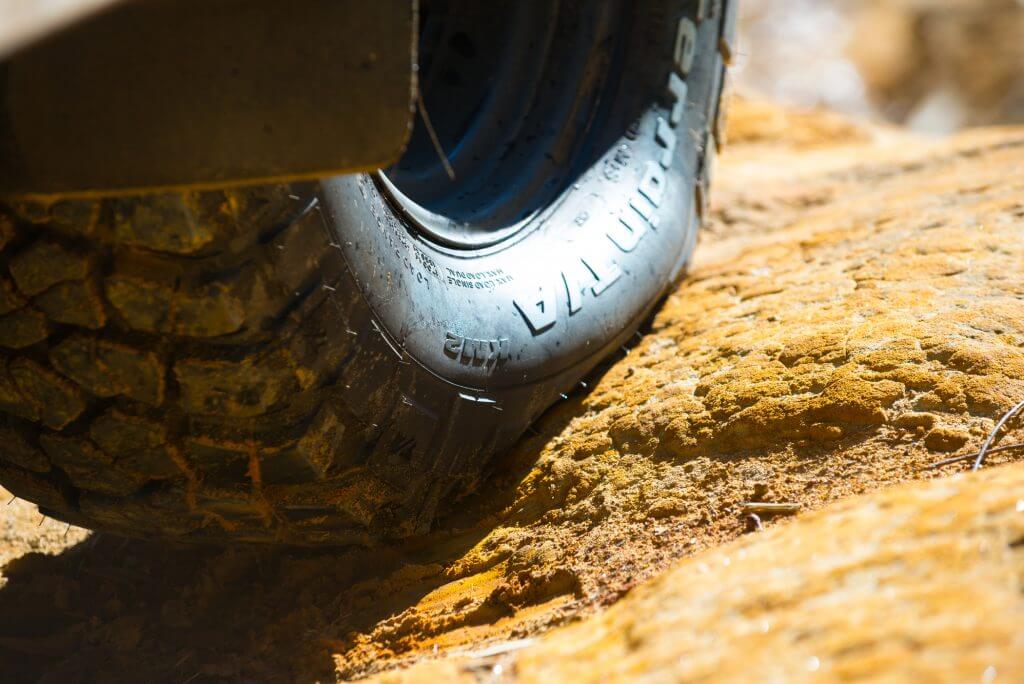

Learning a bit more about what’s keeping you connected to the tracks can make your offroad journey more rewarding (and safer, too)
Tyres might seem simple, but making the right choice can be the single most effective upgrade you can make to your tow rig or camper trailer.
But let’s face it – there are just too many options to choose from!
So when tyres make up such an important part of your vehicle and camper trailer setup, it’s essential to make a smart, informed decision.
It helps to have a solid understanding of the type of tyre that will suit your needs best and also, how to get the most out of your rubber.
With that in mind, let’s dive into our special guide that will help you get great value from your 4WD or camper trailer’s next set of rubber shoes.

Those mud-terrain tyres sure look pretty sweet, right? Who wouldn’t want a set of those aggressive bad boys adorning their fourbie and camper trailer? Thing is, do you really need them?
When selecting your next tyres, it’s important to remain realistic about your requirements and keep in mind how your vehicle is used.
For example, while muddies might look the goods, traditionally they were a nightmare on sealed roads and not that great on sand, either. In fact, they weren’t good for much at all except slogging through mud holes.
That’s changed (slightly) now, with modern technology helping their road-manners and all-round performance, but ask yourself how often you’re likely to be taking on the sticky stuff.
Be honest with yourself and your friendly tyre dealer about how often you head offroad and what type of terrain you regularly encounter – the key is to make an educated and informed compromise between on-road and offroad performance.
Quality all-terrain tyres are often much quieter on the asphalt than their mud-terrain mates, while offering superior handling, performance and longer tread life to boot.
What those uber-cool mud tyres can offer are more sidewall strength and puncture resistance, so there are pros and cons to both camps.
Just keep in mind how you will be using those tyres – if you only lock the hubs every other month, then perhaps an all-terrain tyre will best suit your needs.
But if you’re out there gettin’ grubby and covering yourself in glory every weekend, then the increased resilience and rugged traction of a mud-terrain tyre is likely worth it for a bit of extra road noise.
Time for another juggling act – what size tyres to buy?
While fitting larger tyres can definitely improve your vehicle’s offroad ability, this option opens up a whole range of downsides, too.
Advantages include increased diff and body clearance, plus improved approach and departure angles. Who doesn’t want that?
For one thing, if you go up a few tyre sizes, your rig’s stability will be affected due to the new, higher centre of gravity.
Your speedometer will also need re-calibrating, as the new rolling diameter will mess with the calculations and your engine will be working harder too, as it pushes all that extra rubber. Cue reduced performance and decreased fuel economy.
Larger tyres will also cause increased stress on related components such as CV joints, steering boxes and wheel bearings, plus your brakes will have their work cut out for them trying to stop that extra load.
Fact is, if you do make the decision to increase your tyre size, there will be significant associated costs.
Be prepared to drop some extra cash on engine modifications, more powerful brakes and even a change of diff ratios to regain some of that lost performance.

Hopefully, the above tips will help you choose the right shoes for you next offroad adventure and go some way toward demystifying those enigmatic black rubber donuts.
Decoding all those numbers down the side of your tyre is of course, a (lengthy) tale for another day, but any reputable tyre dealer will help you crack the code.
The short of it is that making the choice to upgrade your factory-fitted rubber to something better suited to the adventures you have playing out in your head is perhaps the easiest way to gain capability and reliability off the beaten track.
Plus, the more you learn about making your tyres and tyre pressures work for you, the more you’ll get out of your purchase. It really is that simple.

At Mars Campers we work hard to develop the best value for money camper trailers with a view of helping you create memorable experiences with your loved ones.
Did you find this information useful? If you found even one tiny nugget in this material to be useful, please do forward it to three of your friends. I am sure they will thank you for it. You can send it to them via email, Twitter, Facebook or post it on your own website.